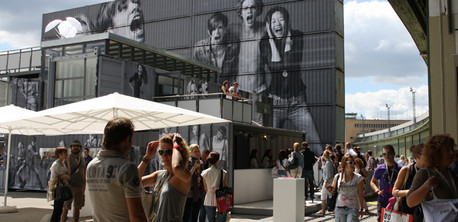Overview
Tempelhof is a 950-acre park site in the heart of Berlin, Germany, with nearly a thousand years of history in its soil. Named for its colonization by the Knights Templar in the 1200s, Tempelhof is 100 acres larger than New York’s Central Park and 200 acres larger than Wirth Park in Minneapolis. From its earliest days, Tempelhof has always been a field; it was only in the 20th Century that the airport was constructed.
Tempelhof Airport closed in 2008 and citizens immediately began “recolonizing” the site as an amazing natural resource set in Europe’s second largest city. The site officially reopened as a park in 2010, retaining its rare 750-acre open space at its center. In 2011, Berlin hosted a design competition for the nascent park, selecting UK-based GROSS.MAX and Sutherland Hussey from among 78 entries and six short-listed teams.
GROSS.MAX characterizes (WorldLandscapeArchitecture.com, 2011) the design vision as “a contemporary prairie for the urban cowboy” that builds on Tempelhof’s transformation over multiple centuries:
The site has transformed over time but always remained a distinct entity as a field; from field of the Templers… Prussian Army’s exercise ground…. Former airport and, finally, to its current status as public park.
We like the idea of metamorphosis; the unfolding of the site over time. The history of the site represents a cycle of development; each phase opens up new use and programmatic possibilities. An important and defining aspect of landscape architecture is that it deals with time and therefore focuses upon process, transformation and duration. Landscape Architecture contributes to shape a world in constant flux and evolution.
The park is being developed on the former airport shape, connected with the airport building, which now used extensively for special events. Four development areas are in the works at the edges of the park.
Scope
- 950 acres in central Berlin (total site), 750 acres of open space
- The airport building is the fourth largest connected building in the world
- Phased development, with the first completion in 2017 and the last in 2020.
Key Players
GROSS.MAX
Sutherland-Hussey
Berlin Senate Department for Urban Development and Environment
Timeframe
2008 Airport closed
2010 Opened as a city park
2011 Design competition: “Parklandschaft Tempelhof”
2017 Substantial completion for International Garden Architecture
2020 Completion goal
What makes Tempelhof the Next Generation of Parks?
- The size and scope of this project makes it noteworthy. This is a holistic approach to planning for the park, including supportive and forward-thinking development along the edges, and adaptive reuse of existing buildings and runways.
- The management organization running Tempelhofer Freiheit is actively looking for creative and collaborative solutions, and they are open to and seek out citizen input through initiatives such as Pioneering Projects.
- The park is organized around six themes that guide choices about appropriate development and activity: Knowledge and Learning, Clean Future Technologies, Sports and Health.
Credits
Images courtesy of Tempelhofer Freiheit, GROSS.MAX and Sutherland-Hussey
With additional research and writing by Elizabeth Hixson

